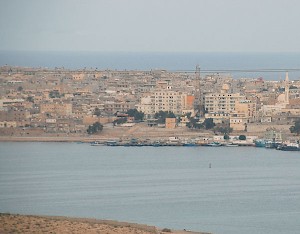Antipyrgon (Tobruk)
Q182092Antipyrgon or Antipyrgos (Greek ᾽Αντίπυργον or ᾽Αντίπυργος, "fortress"): Byzantine fort in the Cyrenaica, modern Tobruk.

In the fifth century CE, new tribal federations threatened Roman Cyrenaica. Texts like Epistle 73 by Synesius of Cyrene, written in 409, describe the problems of the inhabitants, who felt abandoned by the central government. By the end of Synesius' life, the barbarians were close to seizing the province, as is indicated in the lamentation that is known as the Catastasis (413). What happened next, has been left unrecorded, but the crisis was severe; Cyrene, the main city of the Cyrenaica, was abandoned.
According to Procopius, the Byzantine emperor Justinian (r.527-565) reorganized the Cyrenaica, a project that is known as Ananeosis.note From now on, there was a permanent garrison in Antipyrgon, which protected a natural harbor, well sheltered against the prevailing northern winds. This port, modern Tobruk, is still very important, as the events of the Second World War have shown.
Fort Antipyrgon, which measured 270 x 200 meter, was not a new town; it had already been mentioned by Ptolemy of Alexandria.note Archaeologists have on several places found parts of the massive wall that once surrounded the Byzantine fort. Along the waterfront, a substantial part is visible (look here).